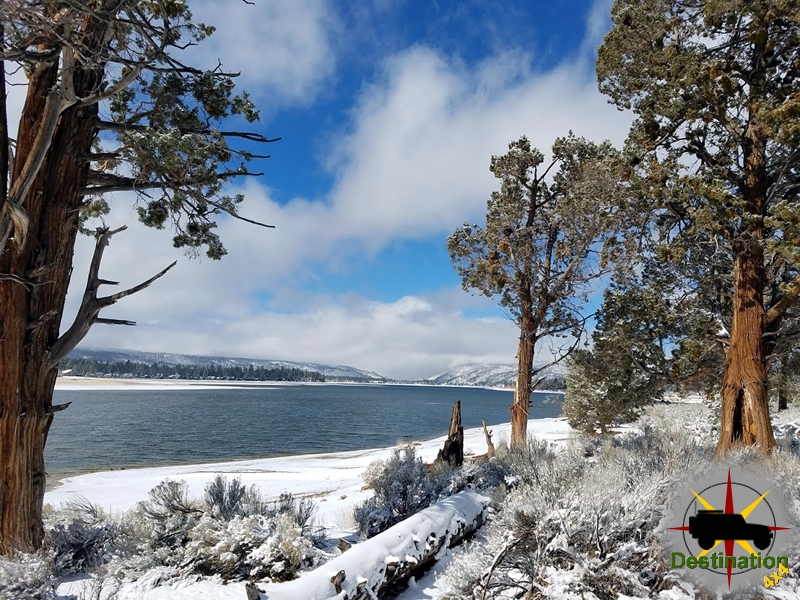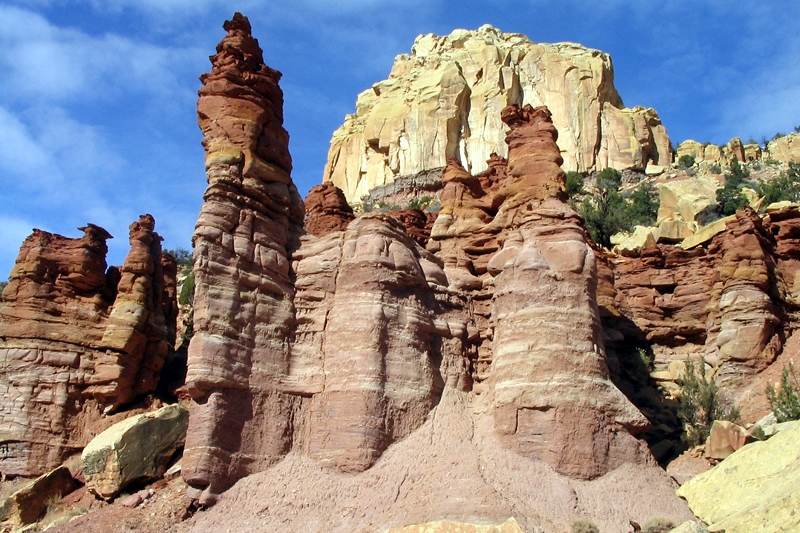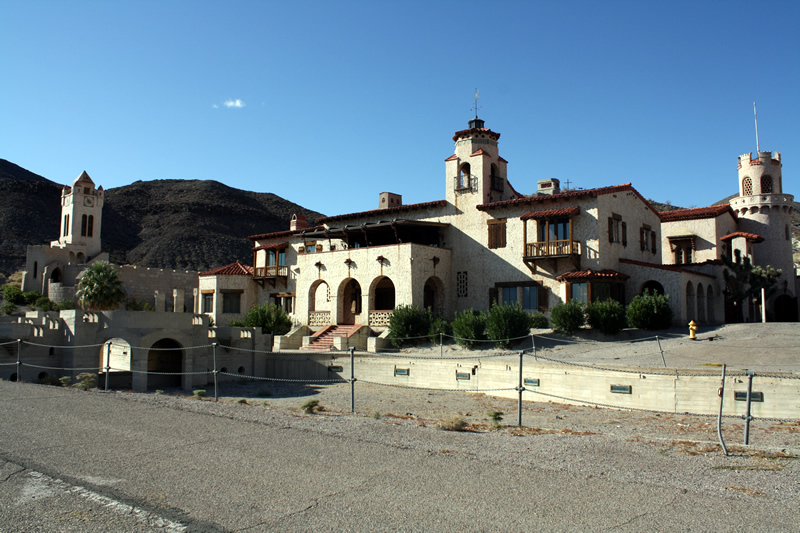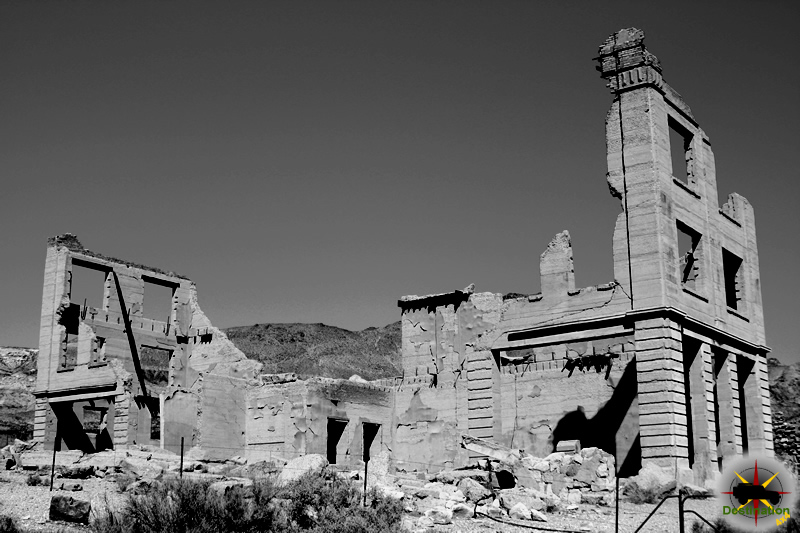
Esmeralda Herald Newspaper
The Esmeralda Herald newspaper was a significant publication in the mining boomtown of Aurora, Nevada, during the late 19th century. Operating in a period marked by rapid growth and decline in the region, the newspaper served as a vital source of information, reflecting the social, political, and economic dynamics of a frontier community. This report explores the history, context, and impact of the Esmeralda Herald, drawing on available historical records to provide a comprehensive overview.
Historical Context
Aurora, Nevada, emerged as a bustling mining town following the discovery of gold and silver in 1860. Founded by James M. Cory, James M. Braly, and E.R. Hicks, the town grew rapidly, with its population peaking at an estimated 5,000 to 10,000 by 1864. Aurora’s unique position on the California-Nevada border led to a period of dual governance, serving as the county seat for both Mono County, California, and Esmeralda County, Nevada, until a federal survey in 1863 confirmed its location in Nevada. The town’s prosperity was tied to its mining industry, which produced $27 million in gold by 1869, but shallow mines and harsh conditions led to a decline by the late 1860s, with the population dwindling to 75 by 1885.
Newspapers played a critical role in such frontier towns, providing news, advertisements, and a platform for political discourse. Aurora was home to several publications, including The Esmeralda Star (1862–1864), Esmeralda Daily Union (1864–1868), and Aurora Daily Times (1864), reflecting the town’s active print culture. The Esmeralda Herald emerged in this context, catering to a community eager for information during a time of economic and political transition.
Publication History
The Esmeralda Herald was a weekly newspaper published in Aurora, Nevada, from October 13, 1877, to April 19, 1884. It was published by F. Kenyon and identified as a “Republican” newspaper, aligning with the political leanings of many Western mining communities. The paper ran for 14 volumes, with its final issue published in Hawthorne, Nevada, after the newspaper relocated there in August 1883, reflecting the shift of Esmeralda County’s seat from Aurora to Hawthorne. The move coincided with Aurora’s declining population and economic base, as mining activity waned.
The Herald’s publication period spanned a critical juncture in Aurora’s history. By 1877, the town was past its peak, with many residents having left after the exhaustion of easily accessible ore by 1864. The newspaper’s operation during this time suggests it served a diminishing but still active community, covering local events, mining developments, and political issues. Its relocation to Hawthorne indicates an adaptation to regional changes, as Hawthorne emerged as a more stable administrative and economic center.
Content and Role
As a Republican-leaning newspaper, the Esmeralda Herald likely focused on issues relevant to its readership, including mining industry updates, local government activities, and national politics. Frontier newspapers typically included marriage announcements, death notices, advertisements for local businesses, and editorials reflecting community values. The Herald would have been a key source of information for Aurora’s residents, offering insights into the challenges of maintaining a settlement in a remote, high-desert environment.
The newspaper’s role extended beyond news dissemination. It likely fostered community identity, connecting residents through shared stories and concerns. For example, it may have covered the activities of local organizations like the Independent Order of Odd Fellows, Esmeralda Lodge No. 6, or reported on the region’s mining ventures, such as those of the Kimbal & Canfield company. The Herald also served as a historical record, preserving details of Aurora’s social and economic life during its waning years.
Challenges and Decline
Operating a newspaper in a declining mining town presented significant challenges. Aurora’s isolation, harsh climate, and reliance on difficult supply routes made publishing costly and logistically complex. The Herald’s relocation to Hawthorne in 1883 was likely driven by these factors, as well as the loss of Aurora’s status as county seat, which diminished its administrative and economic significance. The newspaper ceased publication in 1884, possibly due to insufficient readership or financial support in the face of regional depopulation.
The broader decline of Aurora as a population center also impacted the Herald. By the early 1880s, the town’s infrastructure was deteriorating, with buildings dismantled for materials and the population shrinking. The Herald’s final issues in Hawthorne reflect an attempt to remain relevant, but the region’s economic shift away from Aurora likely rendered the newspaper unsustainable.
Legacy and Archival Status
The Esmeralda Herald provides a valuable window into the history of Aurora and Esmeralda County. Its archives, covering October 20, 1877, to July 29, 1882, and August 18, 1883, to April 19, 1884, are held by institutions such as the University of Nevada, Las Vegas (UNLV) Libraries. Some issues are available on microfilm through the Nevada State Library, Archives and Public Records, allowing researchers to access primary source material. Online platforms like the Library of Congress’s Chronicling America and GenealogyBank may also provide access to digitized copies or related records.
The newspaper’s significance lies in its documentation of a pivotal era in Nevada’s mining history. It captures the resilience and adaptability of a community grappling with economic decline and geographic challenges. For genealogists and historians, the Herald offers insights into family histories, local businesses, and the daily lives of Aurora’s residents, complementing records from other regional newspapers like the Esmeralda Daily Union.
Conclusion
The Esmeralda Herald was a cornerstone of Aurora, Nevada’s print culture, serving as a Republican voice in a fading mining town from 1877 to 1884. Its publication history reflects the broader trajectory of Aurora, from a booming gold rush settlement to a near-ghost town by the 1880s. Despite challenges like isolation and economic decline, the Herald documented the community’s efforts to sustain itself, leaving a lasting record of a dynamic period in Nevada’s history. Today, its archives remain a critical resource for understanding the social and economic fabric of Esmeralda County during the late 19th century.
Millers Nevada
The Millers Nevada State Historic Marker 101 can be found at a rest area along Highway 6, situated a few miles to the west of Tonopah, within Esmeralda County, Nevada. Historically, Millers served as both a train station and a watering point for the Tonopah and Goldfield Railroad, playing a significant role in the region’s transportation network.
Following a mining boom in Tonopah in 1901 and construction of the Tonopah and Goldfield Railroad, Millers was first founded in 1904 as a station and watering stop. The name honored Charles R. Miller, a director of the railroad and former governor of Delaware. He also served as vice-president of the Tonopah Mining Company and instrumental in having its 100-stamp cyanide mill built here in 1906.
In 1901, a mining boom occurred in Tonopah, leading to the establishment of the Tonopah and Goldfield Railroad. This development set the stage for the founding of Millers in 1904, which began as a station and watering stop. The name “Millers” was chosen to honour Charles R. Miller, who was a director of the railroad and had previously served as the governor of Delaware. Additionally, he held the position of vice-president of the Tonopah Mining Company and played a crucial role in the construction of its 100-stamp cyanide mill, which was built in the area in 1906.
The year 1907 saw a significant boom for the town, attributed to the establishment of the Tonopah and Goldfield Railroad’s repair shops and another substantial mill. By 1910, the population of Millers had risen to 274, and the town featured a business district along with a post office. Despite its relatively small size, Millers was proud of its modest business district and claimed to have a large park that included a baseball diamond and a grandstand for spectators.
However, by 1911, the railroad shops and the mill relocated, marking the beginning of a decline for Millers. The town ultimately became abandoned in 1947 when the railroad ceased operations.
Nevada State Historic Marker Text
As a result of mining excitement at Tonopah in 1901 and subsequent construction of the Tonopah and Goldfield Railroad, Millers was first founded in 1904 as a station and watering stop on that line. The name honored Charles R. Miller, a director of the railroad and former governor of Delaware. He was also vice-president of the Tonopah Mining Company and was instrumental in having its 100-stamp cyanide mill built here in 1906. In 1907, the town boomed with the construction of the T. & G. R.R.’s repair shops and another large mill. The population grew to 274 in 1910, when the town boasted a business district and post office. By 1911, the railroad shops and a mill had been moved away, and Millers began to decline. It was abandoned in 1947 when the railroad went out of business.
STATE HISTORICAL MARKER No. 101
STATE HISTORIC PRESERVATION OFFICE
AMERICAN LEGION, NEVADA DEPT.
Town Summary
| Name | Millers |
| Location | Esmeralda County, Nevada |
| Nevada State Historic Marker | 101 |
| Latitude, Longitude | 38.1402, -117.4539 |
| Elevation | 4,800 Feet |
| GNIS | 856083 |
| Population | 275 |
| Post Office | 1906 – |
References
Eureka Nevada
Eureka, Nevada, a picturesque town nestled within the vast and rugged landscape of the American West, has a rich and colorful history that dates back to the mid-19th century. Located in Eureka County, this once-thriving mining town was born from the silver boom of the late 19th century, and its history is intertwined with the rise and fall of the mining industry that defined the region.

Eureka’s history can be traced back to 1864 when silver ore was discovered in the nearby Ruby Mountains. This discovery ignited a rush of prospectors and miners to the area, hoping to strike it rich. The town itself was officially founded in 1869, and it was named after the Greek word “eureka,” which means “I have found it,” reflecting the optimism and excitement of the time.
The silver boom in Eureka was propelled by the rich deposits of silver and other precious metals found in the area. The Eureka Mining District became one of the most productive silver mining regions in the United States, attracting thousands of fortune seekers from all over the country. The district’s mines, including the Ruby Hill Mine and the Eureka and Palisade Mine, produced millions of dollars worth of silver, lead, and gold.

As silver mining operations expanded, Eureka flourished. The town quickly developed into a thriving community with a population that swelled to over 9,000 residents at its peak. Eureka boasted a robust economy, with numerous businesses, saloons, and even an opera house. The town also became known for its well-maintained streets, impressive buildings, and a sense of cultural refinement uncommon in many frontier towns.
Eureka was not just a mining town; it was also a hub of innovation. The Eureka and Palisade Railroad, completed in 1875, connected the town to the Central Pacific Railroad hub in nearby Palisade, Nevada. The rail connection facilitated the transport of ore and supplies. The town also had its own newspaper, the Eureka Sentinel, which documented the local events and served as a source of news for the region.

The late 19th century brought both prosperity and challenges to Eureka. The Silver Panic of 1893, combined with falling silver prices, led to a significant economic downturn in the region. Many mines closed, and the population dwindled as miners left in search of new opportunities. However, some mining operations persisted, and Eureka continued to be a center of commerce and trade.
Nevada State Historic Marker 11 Text
Nevada State Historical Markers identify significant places of interest in Nevada’s history. The Nevada State Legislature started the program in 1967 to bring the state’s heritage to the public’s attention with on-site markers. These roadside markers bring attention to the places, people, and events that make up Nevada’s heritage. They are as diverse as the counties they are located within and range from the typical mining boom and bust town to the largest and most accessible petroglyph sites in Northern Nevada Budget cuts to the program caused the program to become dormant in 2009. Many of the markers are lost or damaged.
“Eureka!” a miner is said to have exclaimed in September, 1864, when the discovery of rich ore was made here–and thus the town was named. Eureka soon developed the first important lead-silver deposits in the nation and during the furious boom of the 80’s had 16 smelters, over 100 saloons, a population of 10,000 and a railroad, the colorful Eureka and Palisade that connected with the main line 90 miles to the north.
Production began to fall off in 1883 and by 1891 the smelters closed, their sites marked by the huge slag dumps seen at both ends of Main Street.
Nevada State Historic Marker 11 Trail Map
Town Summary
| Name | Eureka, Nevada |
| Location | Eureka County, Nevada |
| Latitude, Longitude | 39.5003, -115.9582 |
| Nevada State Historic Marker | 11 |
References
Darwin California – Inyo County Ghost Town
Darwin is a unincorporated community, gold mining town and ghost town located in Inyo County, California about 22 miles from Keeler. The town was named for Darwin French, who lead a party of prospectors into Death Valley in 1860 looking for the mythical gunsight lode. This prospecting eventually lead to the wash, canyon and town named in his honor.

The site which became Darwin was formed in 1874 following a discovery of lead and silver. The overall grwoth of the town was limited by its water supply which is piped from over eight miles away. This discovery coincided with near by Panamint, although the rush to Darwin was more muted. Darwin has a population of about 700 at this time.
The Coso Mining News published weekly from 1875 – 1878 by T.S. Harris. The newspaper closed in September 1878 and the publisher moved up north to Bodie. The moved of the newspaper is symptomatic and followed by many others including miners seeker greener pastures. The town of Darwin had a remaining population of about 250 people. Despite the plunging population the town still supported six saloons, four stores, three restaurants and a drug store. Between the years of 1874 and 1877 newspapers reported at least 80 murders.
Darwin is a rarity and survived its original boom. The town remained viable until World Was I, when larger mining operations could profit of lower yielding ores. A post office opened in 1875 and closed in 1902. Eventually, the post office reopened and remains open today.

Darwin Today
In 2011, a documentary called Darwin is available on Amazon Prime. The documentary is described, “Propelled from society by tragic turns, the isolated community of Darwin, Death Valley (population 35) must now find ways to coexist in a place without a government, a church, jobs, or children.” I did watch the documentary and found it interesting. However, its focus was on the people living there now and not much on the history.
Recently, Brent Underwood, owner of Cerro Gordo featured Darwin on his youtube channel. He was scrounging old boards from buildings in Darwin to help rebuild Cerro Gordo. I am not sure how I feel about damaging one old town to rebuild another…
Darwin Town Summary
| Name | Darwin, California |
| Location | Inyo County, California |
| Latitude, Longitude | 36.268056 -117.591667 |
| Elvation | 4,790 ft ( 1460 m ) |
| GNIS | 241269 |
| Population | 3500 |
| Post Office | Open |
| Newspaper | Coso Mining News ( Nov. 6, 1875 – Sept. 4, 1878 ) |
Darwin Town Map
Resources
Palisade Nevada
Located along the banks of the Humboldt River in Eureka County lies the remains of a railroad town critical to the construction of the Transcontinental Railroad. The townsite was named for Palisade Canyon and located west of town. The narrow canyon is a major barrier in the construction of the railroads. The townsite was plotted in 1868 and served as a train station for the Central Pacific Railroad. Soon the town became a transportation hub which served Mineral Hill, Eureka, Hamilton and other mining camps in the region.

A Railroad Town
In May, 1870, the town establishes a Post Office. Shortly thereafter, in 1874, the Eureka and Palisade Railroad in established. Following the formation of this transportation conduit to Eureka, the population of Palisade flourished. By the end of the 1870’s the town boasted commercial stores, houses, two churches, a school along with a multitude of hotels and saloons.
Although the town has a low crime rate and a sheriff, it did maintain the pretext of the wild western town. It is common, when a train arrived, the the residents would stage “gunfights” and “bank robberies” in order to boost tourism. In 1885, the town builds a new train telegraph office and train station, which services both railroads.

Nearby, the mines in Eureka begin to fail in 1885. As the mines declined so did the railroads, jobs and population.
In 1908, the Western Pacific Railroad travels through the town and serviced Northern Nevada. Following flooding of the Humboldt River in 1910, all three railroads are damaged and the town never recovers to its previous acclaim.
President Hoover Assassination Attempt
Rail Watchman Shot as He Fights 2 Men With Dynamite at Nevada Bridge
Both Suspects Escape
17 Sticks of Explosive are Found on Right of Way
Elko, Nev. November 8, 1932 – What Southern Pacific officials said they believed was an attempt to wreck President Hoover’s special train was frustrated near Palisade, west of here, last night, when a watchman surprised and frightened away two men carrying sticks of dynamite near the railroad right-of-way.
New York Times – November 9, 1932
Palisade Nevada Map
Palisade Nevada lies along the banks of the Humboldt River just west of Nevada State Route 278. The town site is about 10 miles (16 km) south of Carlin, and about 33 miles (53 km) southwest of Elko.
Nevada State Historic Marker 65
Nevada State Historical Markers identify significant places of interest in Nevada’s history. The Nevada State Legislature started the program in 1967 to bring the state’s heritage to the public’s attention with on-site markers. These roadside markers bring attention to the places, people, and events that make up Nevada’s heritage. They are as diverse as the counties they are located within and range from the typical mining boom and bust town to the largest and most accessible petroglyph sites in Northern Nevada Budget cuts to the program caused the program to become dormant in 2009. Many of the markers are lost or damaged.
The Nevada State Historic Marker is located near the intersection of Nevada Route 278 and Palisade Ranch Road.
Located in the tank-like depths of Palisade Canyon, Palisade—first named Palisades—was surveyed and laid out by the Central Pacific Railroad in February 1870. During the 1870s, it rivaled Elko and Carlin as a departure point on the Central Pacific for wagon, freight, and stage lines to Mineral Hill, Eureka, and Hamilton.
In October 1875, with completion of Eureka and Palisade Railroad, Palisade became the northern terminus and operating headquarters for this little, ninety-mile narrow-gauge line stretching southward to Eureka. Between 1875 and 1930, the town was the principal transfer and shipping point on the Central Pacific (which later became the Southern Pacific) and on the Western Pacific Railroad after its 1909 completion.
At its peak, the town boasted a population of 300. It was a self-contained community, and railroading was its business. There were passenger and freight stations, sidings on both the Southern Pacific and Western Pacific Railroads, and a large ore transfer dock between the narrow gauge and standard gauge lines. All Eureka and Palisade (Eureka-Nevada after 1912) headquarters facilities were situated here.
After the narrow-gauge line ran its last train in September 1938, Palisade went into a long decline. The post office was finally closed in 1962.
STATE HISTORICAL MARKER NO. 65
STATE HISTORIC PRESERVATION OFFICE
NORTHWESTERN NEVADA HISTORICAL SOCIETY
Town Summary
| Name | Palisade Nevada |
| Also Known by | Palisades, 10-Mile Canyon, 12-Mile Canyon |
| Location | Eureka County, Nevada |
| Latitude, Longitude | 40.6102, -116.1986 |
| Elevation | 4,850 feet |
| GNIS | 847450 |
| Nevada State Historic Marker No | 65 |
| Population | 300 |
| Post Office | May 1870 – 1961 |





